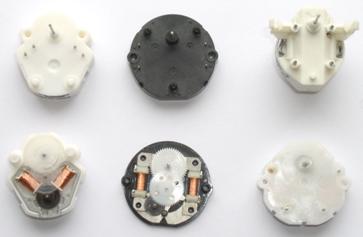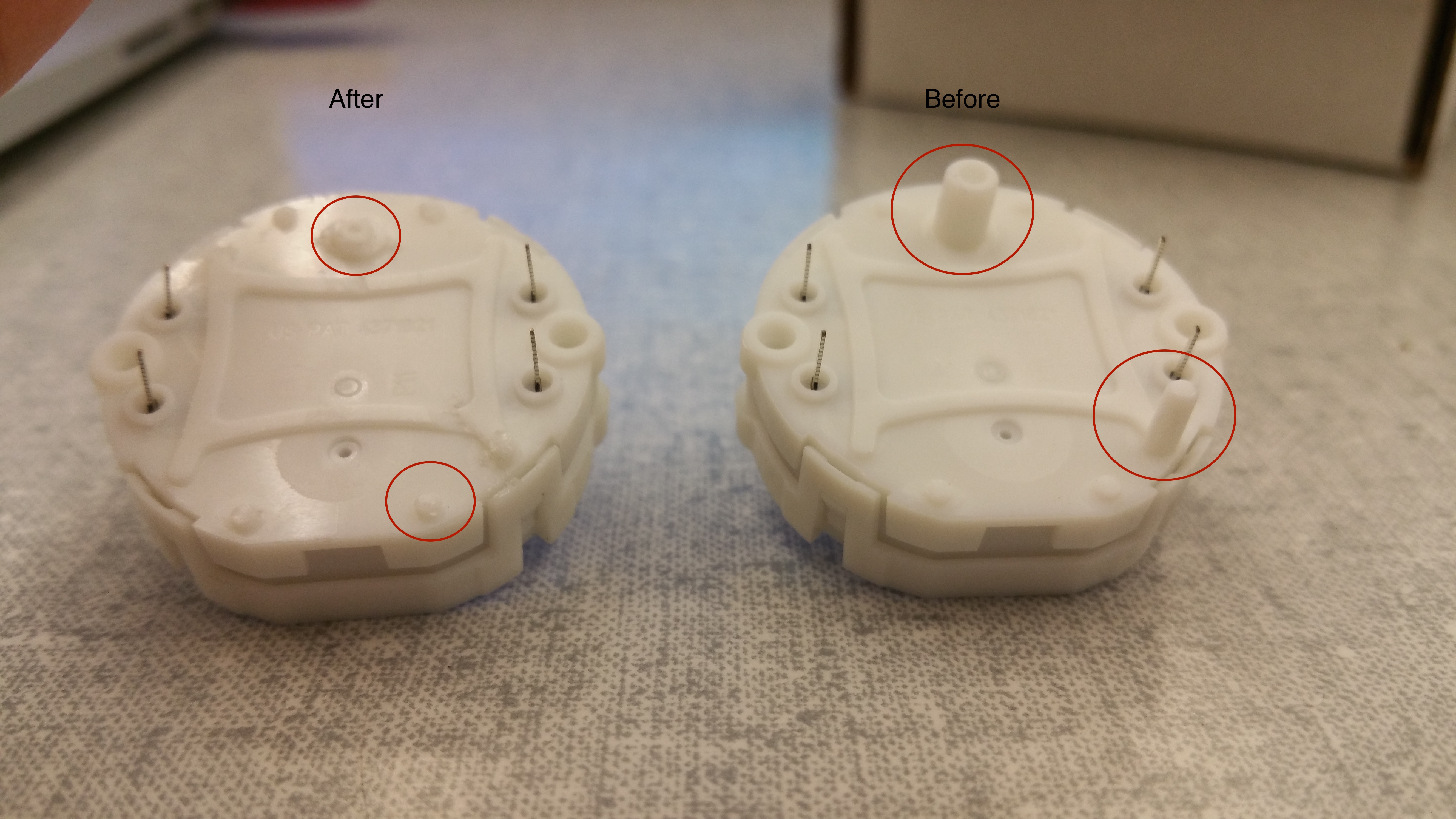Automotive Gauge Stepper Motor
The idea behind the project is simple: take a stepper motor, put a needle on it, and connect it to a mbed. Instant analog gauge, measuring anything the mbed can calculate.
Description
These stepper motors are often used in gauges for motorcycles and cars to replace the old-style fully-analog type. They have extremely fine step precision of about 1/2 a degree per step, 600 steps for single stepping, fast response for quick movements, and a range of 315° degrees. Their smooth motion makes good for small projects that need a dial indicator, and more precision motion than you can get with a needle gauge.
This is a bi-polar stepper motor and you need to have some sort of H-Bridge to drive it. A L293D or TB6612 will do the job nicely. You can have a microcontroller that can drive 200 ohm loads; this way you will be able to use the direct pins without extra MOSFETs.
The motor is quite 'weak', not good for moving anything but a light indicator. We have a red-line dial that fits nicely on top by pushing onto the needle shaft.




Technical Details
- Axial Force Maximum: 150N
- Axial Pull Force Maximum: 100N
- Radial Force Maximum: 12N
- Rotation Angle Maximum: 315°
- Coil Resistance: 260 ohm
- General Tolerance: ± 0.1 / ± 5°
- Rotation Angle Maximum: 315°
- 600 steps per 'rotation' (315 degree rotation)
Dimensions:
- Red-Line Dial Diameter: 13mm / 0.5"
- Red-Line Dial Length: 42mm / 1.65"
- Dial Thickness: 1mm / 0.04"
- Motor Diameter: 32mm / 1.3"
- Motor Thickness (w/o pins): 9mm / 0.35"
Schematic


Video
The movement of the needle is amazingly smooth and quite fast, as seen in the video. This is really good if you want a more analog display than LEDs and LCDs can provide.
Source Code
include the mbed library with this snippet
#include "mbed.h"
#include "StepperMotor_X27168.h"
StepperMotor_X27168 smotor(p25, p26, p23, p22);
int main() {
smotor.step_position(180);
wait(0.5);
smotor.step_position(100);
wait(0.5);
smotor.angle_position(270);
wait(0.5);
smotor.step_position(0);
wait(0.5);
}
Import libraryStepper_Motor_X27168
The API for a Stepper Motor providing position and speed control for an Automotive Gauge Stepper Motor.
Import programECE_4180_Lab_4
Demo Code for the Automotive Gauge Stepper Motor moving the needle to several locations starting from zero initial position
4 comments on Automotive Gauge Stepper Motor:
Please log in to post comments.



Hi please send algo and schmetic on mail2santosh.sneh@gmail.com. thnx